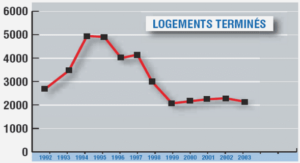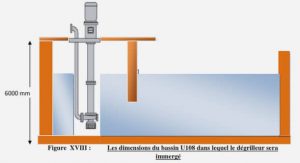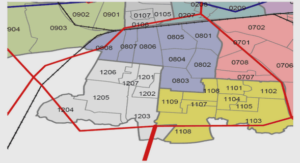LEPTOSPIRES PATHOGENES DANS LES
EAUX DE SURFACE ET LES EAUX
SOUTERRAINES
INTRODUCTION Leptospirosis is a bacterial disease caused by spirochetes of the genus Leptospira. Leptospires infect and develop inside renal tubules of a variety of Vertebrates, essentially mammals, notably rodents, which excrete the pathogen into the external environment. Humans are infected following contact with contaminated water or humid soils. Symptoms range from null to very severe and death (reviewed in Haake & Levett 2015). It is considered that one million cases occur annually in the world, among which 60,000 have fatal issues (Costa et al. 2015). Leptospirosis has been mainly associated with rice agriculture and breeding as well as water recreational activities (Mwachui et al. 2015). Flooding episodes may also trigger local leptospiral epidemics (e.g., Thaipadungpanit et al. 2013), with one out of eight flood event-associated epidemics being due to leptospirosis (Cann et al. 2013). In addition, more and more evidence suggest that the disease may occur in urban settings, especially socio-economically disadvantaged, informal and poorly sanitated ones, such as slums (e.g., Ko et al. 1999; Cornwall et al. 2016), sometimes with higher waterborne leptospires concentrations compared to surrounding rural areas (e.g. in Peru, Ganoza et al. 2006). As a consequence, ongoing urbanization together with multiplying extreme climatic events are expected to increase the risk of human leptospirosis (Lau et al. 2010). This may be particularly true in Africa where the disease is present but yet remains poorly documented (reviews in de Vries et al. 2014; Allan et al. 2015). In particular, we are aware of no study focusing on soil- or waterborne leptospires in Africa (see Tab. 2 in the review by Bierque et al. 2020). The so-called « Abidjan-Lagos corridor » (ALC) is a 700km-long conurbation that sprawls along the West African Atlantic coast. It currently houses >25 million people who live within and in the surroundings of large adjacent cities such as Lagos (11.8 million inhabitants), Porto-Novo (570,000 inhabitants), Cotonou (1.5 million inhabitants), Lomé (1.7 million inhabitants), Accra (4.4 million inhabitants) and Abidjan (4.7 million inhabitant) (2015 data; OECD/Africapolis project, www.africapolis.org, 2020). It is expected to reach ca. 34 million city dwellers by 2025 (UN Habitat, 2014). This very rapid and mostly uncontrolled urbanization translates into the creation and expansion of vast socially disadvantaged areas where pollution, access to basic services (e.g., health care, education, transport, sanitation, waste management) and acceptable housing conditions are rare, thus raising important environmental and health issues. In addition, the ALC comprises many lakes, mangroves and swamps which form a dense hydrographic network. Together with a subequatorial climate, low altitude and flatness, this makes this West African coastal region extremely susceptible to flooding events. For instance, 43% of Cotonou, Benin, is flooded one to two months a year either following Lake Nokoué overflows or rain accumulation in shallows. Such episodes directly affect 200,000 inhabitants and indirectly impact many others through service interruption, resource unavailability or degraded water quality (PCUG3C, 2010; Houéménou et al. 2019b). In addition, they are often enhanced by poor drainage due to defective or crowded sanitation network as well as anarchic land use (PCUG3C, 2010).These conditions as well as the omnipresence of anthropophilous rodents (Houéménou et al. 2019a) elevate the risk of leptospiral contamination in the ALC (Dobigny et al. 2018). Accordingly, up to 18.9% of commensal rodents were found pathogenic Leptospira-positive in cities from south Benin (Houéménou et al. 2014, 2019a), suggesting that leptospires may massively circulate in the ALC urban environment. Mean annual temperatures (ca. 27°C) and rainfalls (ca. 800-1,600mm) are highly favorable to Leptospira survival. However, although waters and humid soils appear as the corner stone of human contamination (Barragan et al. 2017; Bierque et al. 2020), little is known about the precise environmental conditions that are compatible with pathogenic Leptospira outside of its mammalian host (see for instance Chang et al. 1948; Gordon-Smith & Turner 1961; Khairani-Bejo et al. 2004; WojcikFatla et al. 2014; André-Fontaine et al. 2015; reviewed in Barragan et al. 2017 and Bierque et al. 2020), especially in urban habitats where pollution may be very important (Lapworth et al. 2017). The present study aims are: (i) to confirm the presence of pathogenic leptospires out of their hosts in Cotonou waters, (ii) to determine the physico-characteristics of waters where it was found, and (iii) to compare these physico-characteristics with the chemical spectrum of all waters within the city. Altogether, our preliminary data allow us to explore for the first time the ability of leptospires to evolve in water within an urban polluted habitat in Africa.
MATERIAL AND METHODS
Study area and sampling
Cotonou town is located in the coastal sandy plain of Benin between the Atlantic Ocean at the south and Lake Nokoué at the north (Fig. 1). The littoral zone in the south of Benin is characterized by a subequatorial climate. The average annual rainfall for Cotonou is 1,300 mm (Yabi and Afouda, 2012). Seasonal variations during the year are marked by a large rainy season from mid-March to mid-July followed by a small rainy season from mid-September to mid-November alternated, respectively, by a small dry season from mid-July to mid-September and a large dry season from mid-November to midMarch. The study area involves 3 districts located in the core city of Cotonou: Ladji, Agla and Saint Jean (Fig. 1a) that are distinct in the sources and duration of inundation and pond waters. Ladji is located at the edge as well as upon the Lake Nokoué, thus displaying houses built both on hard ground and on stilt pegs (Fig. 1b). Lacustrine waters are permanent, but flooding of zones adjacent to the lake only occurs at the end of the rainy season (i.e., September and October) following the rise in lake levels. Therefore, the area has both long-standing lake water and temporary pond waters. Permanent ponds are also present due to dry season groundwater discharge (Houéménou et al. 2019b). Ladji is densely populated, has essentially informal housing development and is a very poor area where even the most basic public services are usually missing. In particular, waste management is almost inexistent, garbage are omnipresent and are even often used as embankment material. Such an environment favors proliferation of rodents, which are abundant and infest 60-100% of households depending on the season (Dobigny et al. 2019). Agla is a recent but rapidly expanding district within a vast lowland that is extensively flooded early in the rainy season (i.e., starting from June) following rainfall accumulation. Similar to Ladji, permanent ponds are also present in Agla due to the extensive low-lying areas. The permanent ponds are formed by groundwater discharge in the dry months, whereas during the winter months the rainfall inputs to the ponds reverse the hydraulic gradients, resulting in groundwater recharge ponds (Houéménou et al. 2019b). The habitat in Agla includes hard-built houses as well as very precarious cabins, with the poorest inhabitants usually gathering around or within these floodable low-lying areas (Fig. 1b). These low-lying areas are also widely used as dumping sites for household waste (Fig. 1b). Rodents are abundant in households, with infestation rates always ≥ 90% (Dobigny et al. 2019). Saint-Jean is an old and formal district that has large open sewers and many houses that are solidly constructed. This district is not floodable per se, but large ponds may stand for several days after heavy rains. Rodents are also abundant in ca. 90% of households (Dobigny et al. 2019). In 2017 and 2018, the three districts of Cotonou (Agla, Ladji and Saint Jean; Fig.1b) were monitored for both water quality parameters (physical parameters, major ions and trace elements) and leptospire presence. Water sampling was organized concomitantly (i.e. within the same week) in the three districts during the dry season (March 2017 and February 2018) as well as at the beginning (June 2017 and June 2018) and at the end (October 2017) of the rainy season. In total, 193 water samples were collected: 85 in Agla, 53 in Ladji and 55 in Saint Jean. Eighty-three samples were tap waters and 61, 29, 17 and 3 samples were from groundwater wells, temporary ponds, permanent ponds and Lake Nokoué, respectively. This corresponds to 51, 64, 55, 5 and 18 samples collected in March 2017, June 2017, October 2017, February 2018 and June 2018, respectively. The detailed distribution of samples among districts, periods and water types are provided in Table 1. The temporary ponds were differentiated from the permanent ponds by noting locations where the waters were present in the wet season but not in the dry season. Both temporary and permanent ponds were sampled in Ladji (8 and 6, respectively) and Agla (21 and 11, respectively), but not in St Jean where ponds only last a few days.
Screening of waterborne pathogenic L
eptospira Test of a filtration-based method of water-borne Leptospira screening Published studies on water-borne leptospires usually rely on high-speed centrifugation methods and freezing preservation of field samples (e.g., Ganoza et al. 2006; Munoz-Zanzi et al. 2014; Lall et al. 2016; Riedeger et al. 2016; Thibeaux et al. 2017; Sato et al. 2019). These approaches are poorly adapted to field surveys, especially in developing countries where lab facilities are usually hardly available and/or distantly located. In order to adapt protocols of Leptospira screening of waters to the latter conditions, we developed a simple filtration-based method that can be used in the field in absence of costly and high-tech materials. To do so, we first experimentally compared the percentage of bacteria recovery from mineral water (EC=180µS/cm) using centrifugation on the one hand, and filtration on the other hand. For centrifugation tests, lab water samples were inoculated with various amounts (from 36,800 to 3,680,000 cells per sample, each sample in sextuplets) of living culture-originating Leptospira interrogans. Centrifugation consisted in spinning 15mL of inoculated lab water samples at 4,000 rpm during 30 minutes. Water-borne DNA was extracted immediately after centrifugation. Filtration was performed on 500mL of inoculated lab water samples (representing 2,000 to 2,000,000 cells per sample, each sample in triplicates) that were sequentially filtered on 0.45µm and 0.1µm membranes. Filters were then stored in ethanol 96° for subsequent DNA extraction. Total DNA was extracted from both centrifuged and filtered samples using the Biobasics EZ10 Spin column Genomic DNA Minipreps kit, and eluted in 50µL of elution buffer. The same amounts of expected bacteria were extracted directly from 20µL of culture medium as a positive control. Leptospires detection and quantification were performed following a probe-based qPCR method that targets a fragment of the LipL32 gene using a LightCycler® 480 (Roche Diagnostics) in 96-well micro-titre plates with a 10µL final volume for each reaction (see Dobigny et al. 2015). All qPCR investigations were conducted in duplicates. Leptospires screening in field water samples For each of the 193 samples, one liter was collected during the morning. The 1 L bottles were rinsed at least twice with the sample water before collection. Up to 500ml of water aliquots were filtered for Leptospira screening within the same day, once in the lab. All field water samples were first filtered using 5µm filter papers to retain the large suspended particles. Waters were then filtered using 0.45µm filter papers. DNA extraction and leptospirosis quantification proceeded as described above, except that for each water sample both 5µm and 0.45µm filter papers were pooled for DNA extraction.




